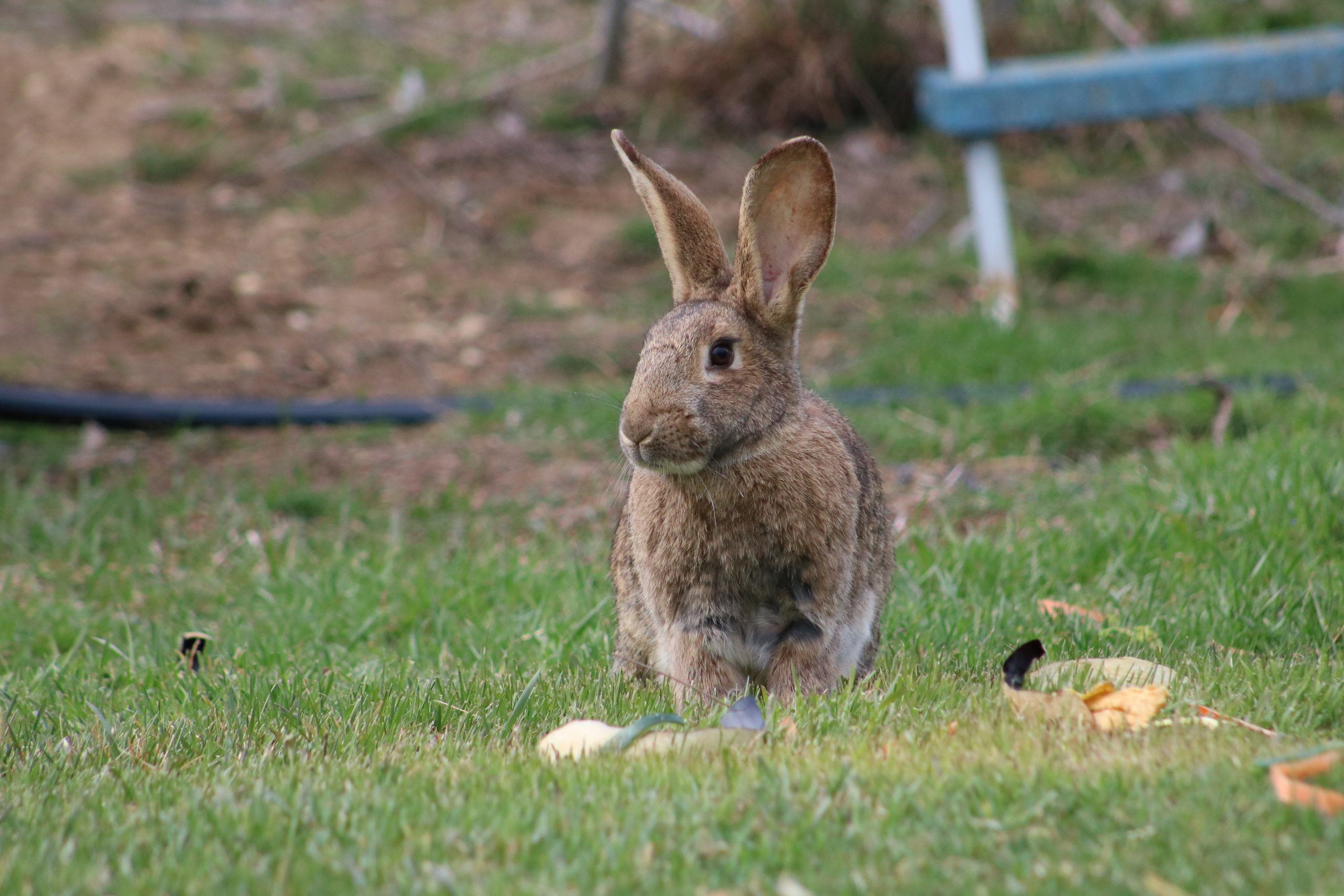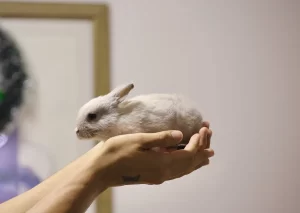Imagine trying to pick up a rabbit that absolutely despises being handled. It can be a daunting task, but fear not! In this article, we’ll guide you through the process of gently lifting your furry friend with love and care.
By understanding their body language, building trust, and using gradual desensitization techniques, you’ll be able to create a positive experience for your rabbit, even if they currently hate being picked up.
Get ready to become an expert at handling your reluctant bunny!
In This Article
- 1 Key Takeaways
- 2 Understanding Rabbit Body Language
- 3 Building Trust With Your Rabbit
- 4 Gradual Desensitization Techniques
- 5 Proper Handling and Lifting Techniques
- 6 Creating a Positive Experience for Your Rabbit
- 7 Frequently Asked Questions
- 7.1 Can I Use Gloves or Other Protective Gear When Handling an Aggressive Rabbit?
- 7.2 Can I Use Treats or Food to Distract My Rabbit While I Pick Them Up?
- 7.3 How Long Does It Usually Take for a Rabbit to Become Comfortable With Being Picked Up?
- 7.4 Is It Normal for a Rabbit to Scratch or Bite When Being Handled?
- 7.5 Should I Avoid Picking up My Rabbit if They Have a History of Aggression or Fear?
- 8 Conclusion
Key Takeaways
- Understand the rabbit’s body language and signs of fear or stress
- Build trust with regular quality time, positive reinforcement, and a safe environment
- Use gradual desensitization techniques with treats and positive reinforcement to encourage calm behavior
- Use proper handling and lifting techniques to minimize stress and discomfort for the rabbit
Understanding Rabbit Body Language
You can improve your ability to handle a rabbit by observing their body language and understanding what it means. Rabbits communicate primarily through non-verbal cues, and being able to decipher these signals will help you build trust and rapport with your rabbit.
One important aspect of rabbit body language is their ears. When a rabbit’s ears are standing upright and facing forward, it indicates that they’re alert and content. On the other hand, if their ears are flattened against their body, it may be a sign of fear or stress.
Additionally, a rabbit’s body posture can provide valuable information. If a rabbit is crouching low to the ground, it may indicate fear or anxiety.
Building Trust With Your Rabbit
To build trust with your rabbit, it’s important to spend regular, quality time together and consistently provide positive reinforcement. Gaining your rabbit’s trust takes patience, understanding, and a willingness to establish a bond.
Start by creating a safe and comfortable environment for your rabbit, ensuring they’ve enough space to roam and hide when needed. Offer them a balanced diet and provide mental stimulation through toys and activities.
When interacting with your rabbit, approach them calmly and speak softly. Avoid sudden movements or loud noises that may startle them. Offer treats and rewards when they display positive behavior, reinforcing their trust in you.
Gradual Desensitization Techniques
If you want to help your rabbit overcome their fear of being handled, try using gradual desensitization techniques.
Rabbits can be quite sensitive creatures, and it’s important to approach their fears with patience and empathy.
One effective method is to introduce treats during handling sessions. Start by placing a treat near your rabbit and gradually move it closer to you each time. This will help your rabbit associate being handled with positive experiences and rewards.
Additionally, using positive reinforcement to encourage calm behavior during handling can be highly effective. Praise your rabbit and reward them with treats when they remain calm and relaxed in your presence.
Remember, building trust takes time, so be consistent and gentle in your approach.
With patience and positive reinforcement, your rabbit will gradually become more comfortable with being handled.
Proper Handling and Lifting Techniques
The proper handling and lifting techniques for rabbits can help prevent injuries and ensure their safety. When picking up a rabbit, it’s important to approach them calmly and gently. Bonding exercises and calming techniques can be used to create a positive association with being handled.
Here are some tips to follow:
- Create a safe environment: Make sure the area is free of hazards and distractions.
- Approach from the side: Rabbits have a blind spot directly in front of them, so approach from the side to avoid startling them.
- Support the body: Place one hand under the rabbit’s chest and the other hand under their hindquarters to provide support.
- Lift slowly and smoothly: Lift the rabbit with slow and controlled movements to avoid causing them stress or discomfort.
- Communicate with your rabbit: Use a calm and reassuring voice to help keep them calm during the handling process.
Creating a Positive Experience for Your Rabbit
When spending time with your rabbit, make sure to use positive reinforcement techniques and provide treats, so they associate your presence with a pleasant experience. Reward-based training methods are highly effective in creating a positive association between you and your rabbit.
By using treats and praise, you can reinforce desired behaviors and build trust with your furry friend. It’s important to create a safe and comfortable environment for your rabbit as well. Provide them with a spacious and secure enclosure, filled with toys, hiding spots, and soft bedding. This will help them feel secure and reduce any stress or anxiety they may have.
Additionally, ensure their surroundings are free from any potential hazards or dangers. By implementing these strategies, you can create a positive experience for your rabbit, leading to a stronger bond and a happier, healthier pet.
Frequently Asked Questions
Can I Use Gloves or Other Protective Gear When Handling an Aggressive Rabbit?
When handling an aggressive rabbit, it’s important to prioritize safety. Using gloves or other protective gear can provide a barrier between you and the rabbit’s teeth and claws. This can help you safely restrain the rabbit without getting injured.
Can I Use Treats or Food to Distract My Rabbit While I Pick Them Up?
You can use positive reinforcement to train your rabbit to enjoy being picked up. However, if your rabbit still hates it, try alternative methods like using a blanket or towel to gently scoop them up.
How Long Does It Usually Take for a Rabbit to Become Comfortable With Being Picked Up?
To help your rabbit become comfortable with being picked up, try using training techniques like positive reinforcement and gradual desensitization. Creating a safe and comfortable environment will also help them feel more at ease.
Is It Normal for a Rabbit to Scratch or Bite When Being Handled?
Are there any alternative methods for handling a rabbit that hates being picked up? What are some signs that indicate a rabbit is stressed or uncomfortable when being handled? It’s normal for a rabbit to scratch or bite when feeling scared or threatened.
Should I Avoid Picking up My Rabbit if They Have a History of Aggression or Fear?
If your rabbit has a history of aggression or fear, it’s important to respect their boundaries and find alternative handling methods. Build trust through positive reinforcement techniques, like offering treats and creating a safe environment for them.
Conclusion
Congratulations! By taking the time to understand your rabbit’s body language, building trust, and using gradual desensitization techniques, you have successfully learned how to pick up a rabbit that hates it. Just like gaining the trust of a shy rabbit, this process requires patience, empathy, and a gentle touch.
Remember, in the magical world of rabbits, trust is the key that unlocks their hearts. So go forth, bunny whisperer, and may you and your furry friend have many delightful adventures together!





